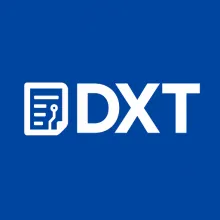
DION: The Distributed Orthonormal Update Revolution is Here
DION (Distributed Orthonormal Update), a new approach to distributed machine learning, promises to revolutionize how we train complex models on massive datasets
The Problem: Scaling Machine Learning
Training large-scale machine learning models presents significant challenges:
- Communication Bottlenecks: In distributed training, exchanging parameter updates between workers can be slow.
- Computational Intensity: Each worker needs to perform computationally intensive tasks on its data subset.
- Data Locality: Accessing and managing data across distributed systems adds complexity.
DION's Approach: Orthonormalization
DION tackles these challenges by employing orthonormalization principles. This involves:
- Orthonormal Basis: Transforming the model parameters to an orthonormal basis. This aims to create independent components.
- Decoupled Updates: Allows model updates on each worker to be somewhat independent, reducing inter-worker communication requirements.
- Efficient Communication: The design potentially improves the efficiency of exchanging updates.
Benefits of DION
DION is expected to offer several advantages:
- Reduced Communication Costs: Optimized communication patterns can lead to faster training.
- Improved Convergence: Orthonormalization can improve training stability and faster convergence rates.
- Scalability: Designed to scale better across distributed computing environments.
How DION Works (Simplified)
The core idea involves a "base model" representation, updated by orthonormal transformations learned from the distributed data.
- Data Partitioning: The dataset is split across multiple workers.
- Local Updates: Each worker computes updates based on its data subset.
- Orthonormal Transformations: The updates are combined and transformed using the principles of orthonormalization.
- Model Aggregation: The transformed updates are used to adjust the global model parameters.
Implications for Machine Learning
DION has the potential to significantly impact the field of machine learning by:
- Enabling Larger Models: Making it possible to train more complex models than currently possible.
- Faster Training: Reducing the time required to train models.
- Enhanced Resource Utilization: Optimizing the use of distributed computing resources.
Further Research and Development
DION is a cutting-edge research area. Continued development and investigation will be necessary to realize its full potential. Areas to be researched:
- Theoretical Analysis: Deeper understanding of its convergence guarantees and behaviors.
- Practical Implementations: Optimizing and refining implementations across various hardware and software configurations.
- Application to Different Models: Evaluating the effectiveness of DION on diverse machine-learning models (e.g., deep learning, etc.) and datasets.
The promise of DION is great. It is likely to be an important area of study.
```
